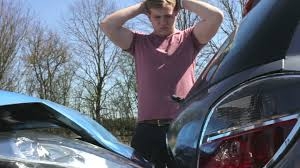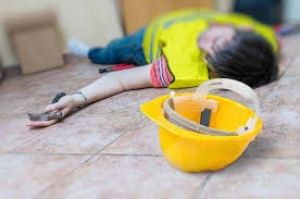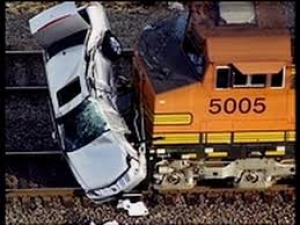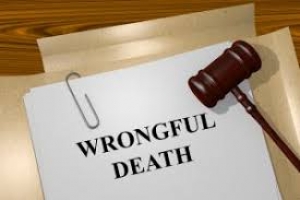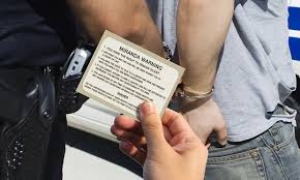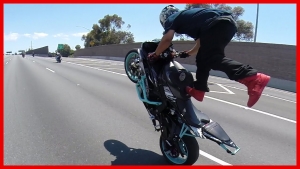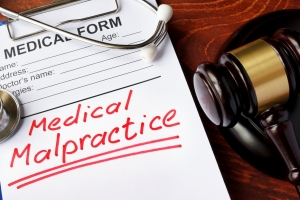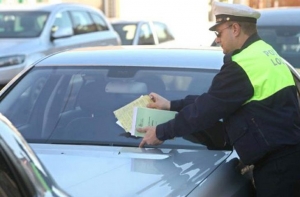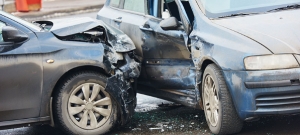
JamesW
Gerald J. Davis is a trial attorney and Vietnam Veteran. He received his law degree from the University of South Carolina in 1997.Mr. Davis retired as a “State Trooper” from the State of South Carolina in 1994. During his tenure with the Highway Patrol, he investigated accidents and made arrests for various criminal and traffic violations. This valuable experience makes him uniquely qualified as a trial attorney to represent his clients with knowledge and skills gained from all sides of a wide spectrum of diverse issues.
How Can A Lawyer Help You In A Car Accident?
If you were hurt or sustained property damage in a car collision, you might be questioning how an attorney can help you. While much depends on the specifics of your case, in general, a lawyer can: 1. Communicate with the other driver’s insurer 2. Obtain the necessary evidence concerning liability/organize your medical records and bills 3. Talk with your health care providers to obtain missing records 4.Organize and present the evidence to prove liability and damages Let’s look at a couple of these things in-depth. Communicating with the Other Driver’s Insurer: In any personal injury case, your lawyer will start up a line of communication with the insurance agency for the other party included. The insurance adjuster has the pocketbook, and so it is essential for a plaintiff’s attorney to have good communications with the adjuster. Obtaining Necessary Evidence of Liability: A skilled lawyer can help secure all of the evidence that you will require to prove responsibility in a car accident claim. Although you have already taken pictures of the accident, your lawyer will presumably go back to the scene to examine it carefully. While a photograph may be "worth a thousand words," truly seeing the scene can be "worth a thousand pictures." The attorney will make sure to take all of the accident reports in the incident and will usually speak with the investigating officers and witnesses. A great lawyer will leave no stone unturned when it comes to collecting evidence of liability. Though we only went through a couple of things a great lawyer can do for you, If you have any other questions about your car accident claim contact The Davis Firm today and let him assist you!
negotiate with lien holders on your claim .
I'm Injured At Work, What Are My Legal Rights?
Workers' compensation laws differ widely from state to state. The rights of an injured worker vary widely as well, as do the various legal procedures that assure those rights. Usually, however, there are plenty of legal rights that are standard across most states: 1. You have the right to file a claim for your injury or illness in workers compensation court or the state industrial court 2. You have the legal right to see a doctor and to get medical treatment 3. If you are not able to go back to work because of your injury or illness, whether permanently or even temporarily, you have the right to some type of disability compensation 4. If you dont agree with any decision by your employer, the employer’s insurance company, or the workers' compensation court, you usually have the right to appeal that decision. 5. You have the right to be represented by a lawyer throughout the process. In knowing your rights to act, as an employee, it is just as important to understand you have the legal right to refuse certain requests/offers. This, in summary, means that you have the right to say, “no.” And if your boss proposes some kind of incentive in an effort to persuade you against filling out a workers compensation claim, this is against the law. You have every right to say, “no.” The laws in each state present that you can proceed in a workers' compensation claim without fear or harassment from your company or employer. If your employer makes it challenging for you to exercise these rights smoothly, the penalties inflicted upon the employer can be quite harsh. It is against the law for your boss to harass you at work or contrarily make it tough for you to do your job if your filing of a workers compensation claim is the reason for that behavior. What Are My Rights Against Parties Other Than My Employer? Sometimes your on-the-job injury might have been produced by the neglect of a third party. Depending on the conditions, this other entity may be a manufacturer of a defective piece of machinery or maybe the operator of a delivery truck. If you are harmed while at work due to the carelessness of another individual, you could have the right to make a claim against that person (or entity). These are identified as “third-party claims.” Usually, these claims are not recorded in the workers' compensation world. Typically, they take the form of civil lawsuits and are filed in state courts or federal courts. Civil lawsuits for "work-related injuries" can typically seek added personal injury damages that are not (recoverable) in a workers' compensation claim. For instance, the advantages you receive in a workers' compensation claim are intended to compensate you for your medical costs and lost earnings. You are typically not permitted to seek compensation for pain/suffering. In a third-party claim, you are ordinarily allowed to seek compensation for pain and suffering, which is in a category of "non-economic" damages.
if you are released back to work by your physician, you have the right to return to your job
Liability For Railroad Crossing Accidents
A train hits a car somewhere in The United States approximately once every 3 hours, according to Operation Lifesaver, an organization committed to decreasing the number of injuries and deaths around railroad tracks/crossings. Moving freight by train persists as one of the most effective and most-used ways of moving freight around the USA. The United States Department of Transportation demands continued growth over the next several years in the use of train networks for the transportation of goods and people. There are more than 250,000 crossings throughout the U., and over 96% of all train accidents happen at these crossings. Almost 1/4 of these crossings are unprotected, they do not have flashing lights or swing-arm gates at the intersections to alert motorists of an oncoming train. After a collision as possibly catastrophic as a train wreck, it is reasonable to question who or possibly what might have been the reason for the accident, and where legal liability rests. Liability of the Railroad Company Operating the Train Just like any person/company who operates a vehicle on a highway, the railroad also has a responsibility to operate its trains in a secure and careful manner. These duties refer to a number of "categories" of railroad operations. A violation of any of those duties may create negligence and result in an accident with a vehicle. A railroad’s duties may include: -Proper training of people operating the train -Ensuring that the train crew is not fatigued, or under the influence of any drugs/alcohol -Making sure that the train’s crew correctly sounds the train’s warning whistle/horn as it approaches -Ensuring that the train is going within the speed limit and Liability of the Railroad Company that Owns the Track Trains don't just travel on tracks controlled by their parent railway company, but frequently on railway lines controlled by other railroad companies. As a result, if a vehicle to train collision happens at a railroad crossing, the company that manages the train may not be the same company responsible for other safety features at the crossing. A railroad that controls a track line doesn’t own only the narrow strip of land on which the track sits on. The company also owns a width of land on either side of the track. Concerning crossings, this ownership inflicts many duties that can frequently affect the overall security or safety of a railroad crossing. These duties include: -Proper maintenance and installation of lights and gates at appropriate crossings -Generally ensuring that approaching motorists to have clear lines of sights at crossings by removing obstructing objects Liability of the Train Designer or Manufacturer Depending on the conditions of the vehicle-train accident, the reason for the accident may be associated with the design of the train or components on the different cars. Many electrical and mechanical systems play essential roles in the amount of safety given around trains. This includes: -Warning whistles, bells, and horns -Flashing headlights and warning lights -Brake systems on locomotives and freight cars Liability of the Local County or City In unique circumstances, the condition of the vehicle roadbed through the crossing may play an important role in creating a collision with a train. Depending on the area of the crossing, the design, liability for construction or maintenance of the train roadbed could fall to the county or local municipality. If the roadbed was poorly created or maintained, it is probable that the county or city may be legally responsible for any injuries endured at a railroad crossing accident. Liability of the Automobile Driver Finally, we cannot overlook that choices made by the operator of the automobile oftentimes play a role in accidents with trains. Drivers may try to drive around crossing gates, assuming that enough time is available to cross the tracks before the train comes. If you are a passenger in a car that is included in an accident with a train at a crossing, the operator of your vehicle may also be legally responsible for your injuries depending on the circumstances of your particular accident.
correctly maintaining locomotives and rolling stock.
If any of those systems, or particular components of those operations, was inadequately designed or created, the company that produced or created the faulty component may be liable for injuries arising out of a crossing mishap.
What Damages are Available in a Wrongful Death Case?
Wrongful Death Case- An action (civil) brought by the survivors or the estate of a person who died due to the neglect or deliberate acts of another is called a “wrongful death” claim. Each state has a particular set of rules overseeing wrongful death claims, including regulations recognizing who can file for a wrongful death lawsuit in the state's court system. Usually, a family member or the personal agent of the deceased’s property will be able to file the suit. The rules of each state also define when this kind of case must be filed, and the different types of damages that can be obtained. What are the Various Kinds of Damages in a Wrongful Death Case? Damages in a wrongful death case usually fall into two general categories, which are frequently defined by two distinct time periods. The first category allows recovery of damages endured by the deceased from the time of the negligent act producing the death, until the time of the decedent’s passing. As an example, in the event of a car accident, this would cover the time from the experience of the crash until the deceased person's eventual death beginning from their accident injuries. That could occur hours, maybe weeks following the accident. The particular damages in this category might cover medical costs, the deceased’s person's mental and physical pain, the deceased’s lost earnings and funeral expenses. The second broad category of damages includes those losses endured by the next of kin after the deceased’s passing. This category of damages is intended to compensate the family survivors for their financial losses. The laws of the various states show that these damages are generally intended to restore the value of money that the deceased would have earned were it not for the unfortunate death. It covers the lost wages that would have been earned until the deceased’s expected retirement. Some states also permit claims for “loss of consortium.” This is when a spouse or immediate family members are stripped of the deceased’s companionship. This is especially notable when an adult parent dies and leaves behind minor children who are stripped of the guidance from the parent. Who Can Be Awarded Damages in a Wrongful Death Case? In deciding what types of damages will be granted in a wrongful death lawsuit, a court will look at various factors encompassing the deceased and his or her relationships with the surviving family members. Usually, wrongful death damages can be awarded to: Spouses – Children – Parents – Depending on the conditions of the deceased’s passing, courts can also award punitive damages to the family members. Punitive damages can be granted where the defendant engaged in a reckless type of conduct ending in the deceased person's death. Punitive damages are intended to punish the defendant and to prevent similar behavior in the future.
The spouse usually has a claim for the lost companionship that emerged from the deceased’s passing, as well as for the spouse’s emotional trauma resulting from the death.
Minor children could also be awarded damages for the loss of their relationship with the late parent, and this includes loss of comfort and support.
Parents of a minor child who has passed away can also recover some damages for their emotional health and the lost "parent to child" relationship that they had with the kid.
Miranda Rights: What Happens If the Police Don't Read You Your Rights?
Many people assume that if they are arrested and not "read their rights," they can avoid punishment. Not accurate. But if the police decline to read a suspect their Miranda rights, the prosecutor cannot use for most purposes anything the suspect states as proof against the suspect at trial. Still, as with almost all legal laws, there are exclusions. What Are Your Miranda Rights? The Miranda warning asks that officers inform you of specific facts following your arrest, and before questioning you. An officer who is going to question you must communicate to you that: 1. You have the right to remain silent. When the Miranda Warning Is Required It doesn't matter whether questioning happens in a jail, at the scene of a violation, or anywhere else: If a person is in custody (stripped of their freedom of operation in any vital way), the police have an obligation to read the Miranda rights if they desire to ask questions and use the answers as testimony at trial. If someone is not in police custody, then no Miranda warning is needed and anything the person states can be applied at trial. Police officers usually bypass arresting people—and make it evident to them that they're free to go—specifically, so they don't have to read the Miranda warning. Then they can arrest the individual after receiving the incriminating statement they sought all along. Pre-Arrest Questioning Do you have to answer police questions if you haven't been arrested? Generally, no. (You usually don't have to respond even if you're under arrest.) A police officer usually cannot arrest a person only for failure to answer questions. There are, nevertheless, circumstances where you might have to present information like identification. Post-Arrest Questioning The almost-universal advice of attorneys is to keep quiet when being questioned after an arrest, at least until after contacting an attorney. Suspects all too often ignorantly share information that can later be used as an indication of their guilt. Consequences of Failure to Provide Miranda Warning Without a Miranda warning, what the arrestee states in response to custodial interrogation can't be used for most purposes as testimony at trial. When Police Come Down Too Hard A violation of Miranda rights doesn't inevitably mean that the officers coerced the statement out of the defendant. But if they did, not only is the statement inadmissible but so too is any evidence that the police receive from the account. Talk to a Lawyer The Miranda rule is complicated, and no one article can tell you all the details. If you've been charged with a crime, you should speak to a lawyer for a full description of the law, including how it may vary slightly in your state or area.
2. If you do say anything, it can be used against you in a court of law.
3. You have the right to have a lawyer present during any questioning.
4. If you cannot afford a lawyer, one will be appointed for you if you so desire.
How To Avoid Motorcycle Accidents
The best way to prevent becoming the next motorcycle accident statistic is to pay attention to safety. Numerous motorcycle collisions can be prevented by consistent attention and education about the safest way to ride a motorcycle. Here are some of the most essential safety tips to keep you riding on the road for years to come. 1. Wear a helmet. 2. Get a motorcycle license. 3. Get professional training. 4. Don't drink and ride. 5. Wear protective clothing. 6. Maintain your bike. 7. Don't share lanes. 8. Know your skill level. 9. Learn about the common causes of motorcycle accidents. 10. Avoid road hazards. If you are in a motorcycle collision and wish to obtain compensation for your injuries or other losses, think about consulting with a lawyer for information or representation.
For many skilled motorcycle riders, safety is a "first priority". Most bikers understand that riding a motorcycle is more hazardous than operating a car. When motorcycle collisions do occur, the results can be very critical. The federal government stated, per mile traveled in 2006, there were 35 times extra deaths from motorcycle collisions than from car collisions. Emergency room staff often associate motorcycles as "donor mobiles."
Evidence implies that wearing a motorcycle helmet greatly lessens the frequency of head injuries in accidents. The National Highway Traffic Safety Administration states, for every 100 motorcyclists killed in a crash while not wearing a helmet, 37 would have survived if they had been doing so. That doesn't even count the substantial decrease in non-fatal injuries produced by helmets. Make sure your helmet fits Department of Transportation standards and have one ready for passengers. Keep in mind that in several states it's illegal to ride without a helmet.
Most states require that bikers get a motorcycle license in order for them to ride on the roadways. Typically, riders must pass a knowledge test and a skills test. Some states expect bikers to also take a motorcycle safety class. Going through these hoops pays off when it comes to road safety. In 2001, more than one-quarter of all motorcyclists killed in accidents did not have a motorcycle license.
Motorcycle riders who are educated or trained by friends account for more than 90 percent of bikers in motorcycle accidents. Getting professional instruction in motorcycle riding might just save your life.
About 50% of the collisions concerning a single motorcycle are produced by speeding or alcohol use, usually, these go "hand in hand". Not only is it against the law to drink and ride a motorcycle, it's also very dangerous.
Protect yourself by using goggles or sunglasses, a jacket, full- fingered gloves, long pants, and boots (without wear). Your clothes should be made of a abrasion-resistant material, (for example leather), and fit tight to the body. Loose apparel can reduce your vision. Choose bright colors so that other riders can recognize you.
Making sure your motorcycle is in great running condition is of the highest importance to safety. Don't limit your maintenance to the engine and brakes or normal things. Regularly check your tires (and tire pressure), headlamps, turn signals and other gear that you wouldn't usually check.
Cars don't anticipate sharing a lane with other types of vehicles. Drivers tend to watch for cars in different lanes and usually won't see a motorcycle sharing a lane with them. Motorists might make a fast lane change or stray to one side, with severe consequences to the motorcycle rider.
Know your abilities, and ride respectively. Riding on the road is not the time to experiment with your expertise or to exceed your skill level.
Knowledge is your buddy. Learn about most general conditions that lead to motorcycle collisions. Think of ways you could evade those circumstances, take note when those conditions might occur, and when you are in those circumstances, take extra caution.
Road hazards, including debris in the road or slippery conditions, are more severe for motorcycles than for automobiles and can lead to critical injuries. Some situations that are hazardous to bikers are not readily known. Take the time to educate yourself about the many road hazards and learn how to control your bike carefully and safely when presented with those hazards.
What constitutes medical malpractice?
A few examples of medical malpractices would be a medical professional neglecting to diagnose a patient as having a heart attack, giving the wrong diagnosis to an ill patient thus limiting treatment, giving a subject someone else’s medicine or operating on the wrong part of the body. How to Avoid Malpractice Over 160,000 people die from medical malpractice every year in the United States. Here are a few ways you can avoid medical malpractice. A person should only use doctors who are board certified in their practice. Make sure to get referrals from your primary care provider. Get second opinions for severe diagnoses or if you feel you have been wrongly diagnosed. Ask questions about everything, including what prescription you are being given and at what measure. Do You Have a Case? If you have been harmed due to inadequate medical care, you may want to sue. To learn if yours is one of the viable medical malpractice cases that obtain settlements, you need to determine if your situation meets the conditions set by your state. While these can vary, in general, your health care provider must have neglected to give the minimum standard of care that is required in a situation such as yours. The negligence must genuinely cause personal harm to you, and the injury must have had a severe impact on you such as pain and distress, mistaken extraction of a body part, or being unable to work. How to Find an Attorney If you are interested in pursuing a personal injury case for medical malpractice, you will require a medical malpractice lawyer. If you have used a different attorney in the past, ask for a referral to a medical malpractice lawyer. You will want to operate with someone who has a lot of practice working this type of case. What to Expect in a Malpractice Case Every state has a medical malpractice statute of limitations, a time span in which your case must be arranged. However, there is usually an exemption called the discovery rule. Your attorney will question you about your situation and have you see another doctor to get an independent viewpoint. Your healthcare provider has medical malpractice insurance and will be represented by the lawyer for the insurance company. Most cases start out with a discovery rule where information is traded. You and the health care provider will likely be deposed. Your attorney will strive on settling. If an agreement can’t be given, your case will go to trial. Medical malpractice cases are very common, but it is essential to work with a lawyer who knows your specific situation and has a lot of expertise with your type of case.
Medical malpractice happens when a doctor or other healthcare providers injure a patient or if a faulty procedure injured you or a loved one. Also, if a medical professional failed to do something that is required for your well-being. When understanding medical malpractice, it is critical to note that all medical mishaps are not malpractice. An error is only considered malpractice if there is negligence. The medical malpractice definition is that the health care provider did not follow the standard of care in the field. The error the health care provider made must genuinely end in harm to the patient. The question regularly asked in medical malpractice cases is whether a reasonably competent health care specialist in the same position would have made the same choice. If the answer is no, then there may be grounds for a medical malpractice claim.
Traffic Misdemeanors
-The traffic violation produces harm to a person -The traffic violation produces damage to property -The traffic violation generates a substantial threat of harm to a person or danger to property Misdemeanor traffic offenses are also different from traffic infractions because they bear harsher penalties. Misdemeanor traffic offenses can lead to fines of up to $10,000 and could additionally include jail time depending on the severity of the crime and the measure of damage or injury committed. How Are Misdemeanor Traffic Offenses Classified? Traffic offenses are typically considered minor offenses. Simple traffic violations regularly lead to a traffic ticket and are deemed infractions. If the traffic offense is more severe, then the offense may lead to misdemeanor or felony charges. These are recognized as criminal offenses and ordinarily, involve a trial and other extended legal consequences. What Types of Actions Are Considered Traffic Misdemeanor Offenses? The rules overseeing traffic offenses will differ widely from state to state. Traffic misdemeanors usually involve producing a risk to human life or property. Most jurisdictions will recognize the following to be traffic misdemeanors: Some things may be considered traffic misdemeanors even though they do not include the operation of a moving vehicle. These are usually classified under “disorderly conduct.” What Are the Penalties for Misdemeanor Traffic Offenses? Being charged with a misdemeanor traffic offense commonly ends in the consequences of a fine and/or incarceration. ( $100 to several hundreds of dollars, while imprisonment is generally limited to a term of one-year maximum.) Many states may take extra steps when punishing for a misdemeanor traffic offense. These can involve the loss/suspension of driving rights, and the towing of the motor vehicle. The court may also require additional penalties such as registration in a substance abuse program if alcohol was included in the violation. Some violations that start as traffic misdemeanors may be heightened to the level of a felony charge. This can be the case if the violation included repeat offenses, or if it ended in death, great bodily harm or serious property destruction. Felony charges include higher fines and potential sentencing in a state prison facility. Should I Contact a Lawyer For a Traffic Misdemeanor Offense? Traffic misdemeanors should not be considered lightly, as they will be regarded as negative in your criminal history. Hiring a skilled criminal lawyer might be significant if the traffic violation wants a court appearance or trial. An expert criminal lawyer can help interpret your state’s traffic laws clearly, and they can help you display your case in front of a court of law.
Many traffic offenses that are non-dangerous or are just driving violations are called infractions. Though, in cases, traffic violations become misdemeanors because of the importance of the violation. Typically, a traffic violation is a misdemeanor if it:
-Driving recklessly
-Driving without insurance
-Driving without a license
-Failing to stop after an accident
-Driving under the influence of drugs or alcohol (DUI)
Whose to blame in a car accident?
Understanding Automobile Accident Law? Car accident law applies to the legal rules that define who is responsible for the personal and property damage following a traffic accident. This area of the law consists of the policies of negligence, as referred to this particular category of personal injury cases. Like other cases in which negligence law applies, car accident litigation is governed almost solely by state law. Car accident victims in every state must show the same essential four elements to obtain compensation. These elements are a duty, breach, causation, and harm. Drivers have a legal responsibility to follow the rules of the road and to operate their vehicles reasonably. For instance: driving a safe speed, maintaining control, exercising awareness, observing traffic signals, using blinkers and headlights, etc. The existence of a duty is typically accepted without much debate. The plaintiff will usually be expected to offer proof that the defendant breached that duty. The breach may be proven by primary evidence, such as eyewitness statement, traffic monitoring video, or an admission of liability. The plaintiff may need to resort to a circumstantial indication, such as skid marks, paint smudges, or blood alcohol readings. Just because the defendant had a responsibility to operate the vehicle in the required manner, and it is proved that the defendant breached that duty, the court will not assume those circumstances caused the plaintiff’s damages. Instead, the plaintiff must prove the element of causation. In car collision cases, this can be done through medical testimony showing the injuries are consistent with the nature of the accident, and that they did not exist previously. Lastly, the plaintiff must prove harm. No matter how outrageous the other driver’s behavior was behind the wheel, the plaintiff cannot bring a negligence lawsuit unless the conduct created damage to the plaintiff’s person or vehicle. Steps to Take Following an Accident The first thing to do after a car collision is to stay quiet about who is to blame for the event. Admitting fault is the most common error potential litigants make following a crash, the rules of evidence do not allow “hearsay.” But there is an exemption for admissions. Even a simple apology can be used against you. It is necessary to make notes of any statements made by the other motorist. A smartphone, tablet, or other electronic devices can be great for recording voice memos. Gather as much detail about the accident as possible. It is essential to take down the other driver’s name and address, license number, and insurance information. Other evidence to note involves witness contact information, descriptions of the road, traffic, weather, and photographs of the vehicles. If your cell phone or camera can record video, it would be smart to use it. Video the accident scene up close and from a range, including the location of traffic signs, and crosswalks, Be sure to write down the names of police officers so it will be simpler to get copies of their reports. Never overlook the significance of immediate medical attention. The whiplash action caused by car collisions can create injuries the victim may not see at first, but that grows more noticeable as time passes. As a possible plaintiff in a negligence case, you do not want the other driver’s attorney to belittle the severity of your damages, based on the fact that you did not feel it necessary to attempt treatment immediately. Of everything that can be done after a car collision to protect a victim’s right to compensation, contacting a personal injury lawyer will have the most significant influence. Without the aid of counsel, you will be alone and exposed to the tactics of the opposing side’s insurance organization.
What Is a DUI?
Driving a vehicle while under the influence of alcohol is one of the most deadly things a person can do. There is a significant amount of research to prove that driving performance and reaction times are severely affected by alcohol. Each year drunk driving is liable for about 25% of these deaths. The dangers of drinking are alcohol-related collisions and violence. The effects of alcohol are inadequate coordination and slurred speech, double vision, a reduction of self-control loss of awareness and death. First teens tend to drive faster and do not operate the car as well as more experienced motorists. Their decision making in traffic is often inadequate to avoid a collision. Second, teens do most of their driving at night, which can be even more dangerous. Regular driver's education classes cover 30 hours of classroom teaching and 6 hours of behind-the-wheel instruction. This is not enough time to adequately train a new driver. There is no harmless amount that you can drink and still drive. Even one drink can affect your driving capabilities. In many states, one can be convicted of DUI even though the police didn't see you drive. A person can face losing their license; having embarrassing court appearances, press coverage, and hefty fines. This is why it is essential to get professional representation as soon as possible.
If you drink and drive, you are not only a hazard to yourself but also to your passenger, other highway users and pedestrians. In fact, every 30 minutes, someone in this country dies in an alcohol-related fatality. Last year alone more than one million people were injured in alcohol-related traffic collisions. Alcohol is a depressant that slows down body reactions and the functioning of the brain.
There are legal outcomes due to drinking also. The more a person drinks, the more their ability to make major decisions becomes reduced. After just one drink, an operator can lose their capability to complete the tasks needed to drive a car. At a certain point, a driver will become illegally intoxicated and may be imprisoned for trying to operate a motor vehicle. In every state, there is a legal limit to how much alcohol you can have in your body if you are driving (South Carolina .08). If you drink and drive, you can lose your driver's license and even go to jail.
Traffic accidents are the leading cause of death for teens and young adults. More than 5,000 young people die every year in car accidents, and thousands more are harmed. Motorists who are 16 years old are more than 20 times as likely to have a collision. There are two main reasons why teens are at a higher risk of being in a car crash and lack of driving experience and their tendency to take chances while driving.
Teen drivers are more like to be influenced by peers and other distractions. This can lead to thoughtless driving practices such as speeding, driving under the influence of drugs and alcohol, and not wearing seatbelts.
